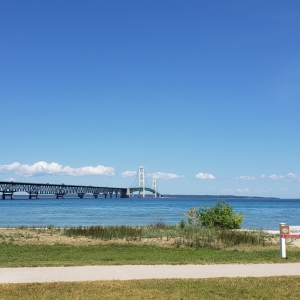The Stream, November 17, 2020: Typhoon Vamco Wreaks Havoc in the Philippines
GLOBAL DAILY WATER NEWS
- The death toll in the Philippines after Typhoon Vamco is rising.
- A small town in South Carolina is battling their city for clean water.
- Hurricane Iota is set to make landfall in Nicaragua.
- Meteorologists project La Niña to impact the winter months in the Pacific Northwest.
A new study launched by the U.S. Geological Survey aims to understand how snowpack impacts the Colorado River Basin.
“New monitoring technology is essential to addressing many issues associated with our annual water balance in the Upper Colorado River Basin.” – Dave “DK” Kanzer, deputy chief engineer at the Colorado River Water Conservation District. The U.S. Geological Survey has launched a project to learn more about the Colorado River through a sophisticated monitoring system that will study details about the snowpack that feeds the river basin, droughts and flooding and how streamflow supports and doesn’t support groundwater. Deseret News reports that the Upper Colorado River basin supplies about 90 percent of water for the entire Colorado River Basin, 85 percent of which comes from snowmelt. The project is part of a nationwide effort to expand monitoring capabilities at 10 critical watersheds around the United States. Scientists hope to better understand snow accumulation and melt processes in the basin to improve the accuracy of determining water availability for users downstream.
IN RECENT WATER NEWS
HotSpots H2O: In a Year of Unrelenting Floods, Yet Another Storm Hits Central Vietnam – Tropical storm Etau passed through central Vietnam last week as Typhoon Vamco, which struck the Philippines the same week, arrived Sunday. After months of intense storms and flooding, Etau is the twelfth to hit the country this year and the eighth in the past month.
What’s Up With Water – November 16, 2020 – This week’s episode covers the approval of an application to inject millions of gallons of oil and gas wastewater into a Wyoming freshwater aquifer, lawsuits filed against three big companies over ‘forever chemicals’ found in drinking water in New Jersey and Michigan Gov. Gretchen Whitmer, who reached a decision in one of the state’s most scrutinized environmental disputes.
Small South Carolina Town Sues For Clean Drinking Water
Residents in Demark, South Carolina, a small town of only about 3,000, have been drinking water contaminated with an unapproved chemical used to treat pools and spas, according to a new lawsuit. The Independent reports that attorneys filed the lawsuit on behalf of several community members, who have fought this issue in the courts for years and are now looking to include the state’s Department of Health and Environmental Control in a class action lawsuit. The chemical, HaloSan, has been banned from use in water supplies in some states. Federal regulators banned it from use in Denmark’s drinking water in 2018.
TODAY’S TOP WATER STORIES, TOLD IN NUMBERS
160 MPH (257.5 KPH)
Hurricane Iota is currently the strongest hurricane and the only Category 5 hurricane of the Atlantic season in 2020, CBSN Dallas-Ft. Worth reports. The hurricane was sustaining maximum winds of 160 mph (257.5 kph) as of Monday morning and will likely make landfall along the Nicaraguan coast Monday night, a country that was just hit by Hurricane Eta two weeks ago. Iota is the 30th named storm of the 2020 Atlantic hurricane season, which has earned the most recorded hurricanes in one year.
67
Typhoon Vamco, which dumped rain over much of the main Luzon island including the capital city, has proved to be the deadliest cyclone to hit the Philippines this year. Al Jazeera reports the death toll has now risen to 67, with 12 still missing, according to the country’s national disaster management agency. The International Federation of the Red Cross said 47,000 people have been rescued so far but many remain trapped by intense flooding. Additionally, nearly 26,000 homes were damaged and 1.2 billion pesos ($25m) is estimated to have been lost in agricultural commodities.
ON THE RADAR
Meteorologists are forecasting that La Niña has a 95 percent chance of driving weather this winter in the Pacific Northwest, KGW8 reports. La Niña is a weather phenomenon that occurs when water along the equator in the Pacific Ocean is cooler than normal and collides with the coast of Central and South America. For the Pacific Northwest, this could mean a healthier snowpack and more irrigation water for farmers come summer time. However, La Niña can also prolong winter months. There is about a 65 percent chance of La Niña influencing climate in March, April and May of next year, according to the Climate Prediction Center, a United States federal agency.
Jane is a Communications Associate for Circle of Blue. She writes The Stream and has covered domestic and international water issues for Circle of Blue. She is a recent graduate of Grand Valley State University, where she studied Multimedia Journalism and Women, Gender and Sexuality Studies. During her time at Grand Valley, she was the host of the Community Service Learning Center podcast Be the Change. Currently based in Grand Rapids, Michigan, Jane enjoys listening to music, reading and spending time outdoors.






Leave a Reply
Want to join the discussion?Feel free to contribute!